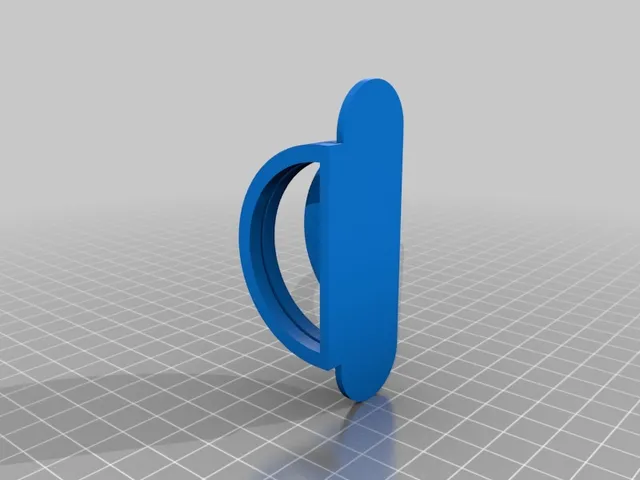
XRD enclosed chamber
prusaprinters
XRD ENCLOSED CHAMBER: This is an enclosed chamber for growing crystalline samples inside an X-ray diffractometer in reflection geometry, designed to investigate the crystallization process in real-time. This chamber allows wide-angle diffraction measurements in the angular range 0° - 160°. The inner atmosphere of the evaporation and yielding better and larger crystals. This is particularly critical for nanoparticles superlattices (for which the design was specifically developed) as well as proteins or other difficult to crystallize compounds (not tested with the current design). The chamber must be covered with a Kapton film, transparent to the X-rays. Its particular semicircular geometry makes the X-ray beam always perpendicular to the Kapton, minimising the parasite scattering and absorption phenomena. Depending on the 3D printing material and on the Kapton, the chamber will be compatible with many different solvents. We only tested PLA, which turned out to be compatible with: Water Alcohols Acetone Tetrachloroethylene PLA is NOT compatible with chloroform and dichloromethane. No other solvents were tested. The first results obtained with this chamber were published in ACS Materials Letters, in the paper "Wide Angle X-Ray Diffraction Evidence of Structural Coherence in CsPbBr3 Nanocrystal Superlattices" by Toso et al. If you make use of this design for scientific purposes, please cite the publication: Toso, S., Baranov, D., Giannini, C., Marras, S. & Manna, L. Wide Angle X-Ray Diffraction Evidence of Structural Coherence in CsPbBr3 Nanocrystal Superlattices. ACS Mater. Lett. acsmaterialslett.9b00217 (2019). doi:10.1021/acsmaterialslett.9b00217 https://pubs.acs.org/doi/10.1021/acsmaterialslett.9b00217 INSTRUCTIONS: Print the chamber with 100% infill to avoid solvent loss or retention within porosities, using the supports if needed. Once printed, insert a standard microscope glass slide on the bottom of the chamber, to serve as a cleanable and flat sample holder (cut it to ≈ 15 x ≈ 49 x 1 mm). Then glue a Kapton film on the top arched aperture, as shown in the illustration (see pictures). Polyacrylate glue (for example Super-Attak) is adequate. Once the Kapton is glued in insert the spacer from below using the other aperture. It will fit without needing any glue and it will tend the Kapton film by slightly pushing the chamber walls apart. The chamber is then ready to use. Simply insert your sample inside and close the entrance aperture with another glass slide. This will provide non-sealed protection, allow the solvent inside to slowly evaporate. Category: Physics & Astronomy
With this file you will be able to print XRD enclosed chamber with your 3D printer. Click on the button and save the file on your computer to work, edit or customize your design. You can also find more 3D designs for printers on XRD enclosed chamber.
